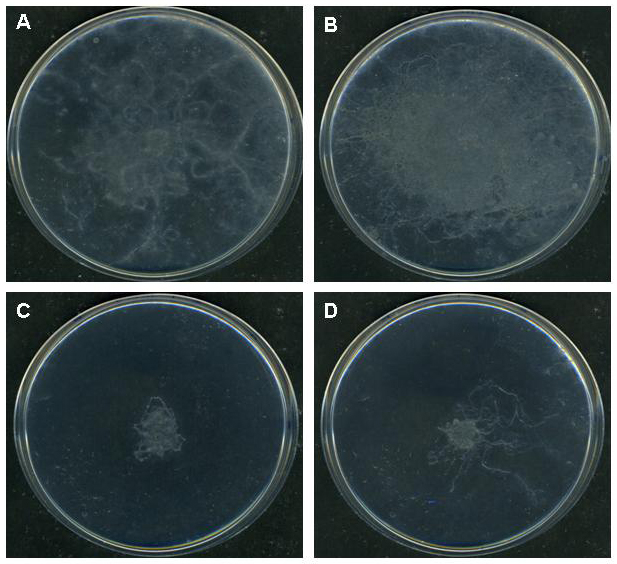C. elegans, as most animals, changes its behavior depending on the environment. We are characterizing mutants deficient in neurexin (nrx-1) and neuroligin (nlg-1) genes. These proteins are cell adhesion molecules present in excitatory and inhibitory synapses and they are required for correct neuron network function (Sudhof 2008). Previously we have shown that nlg-1 deficient mutants are defective in detecting osmotic strength (Calahorro et al. in press). Here we show a simple qualitative method to identify impaired roaming motion.
Description of the method:
1) Pick twenty L4 larval stage animals of each genotype from a fresh NGM plate containing OP50 E. coli and put them in the middle of a 9 cm plate containing 8 ml of agar medium (2% agar, 0,25% Tween20, 10 mM HEPES pH7,2) without bacteria.
2) Incubate the plate from 5 to 7 days at 20°C.
3) The fingerprinting of the worms is recognized by sight as a consequence of their roaming. A representative example is shown in Figure 1.
Figures

References
Calahorro C, Alejandre E, and Ruiz-Rubio M. (in press). Osmotic avoidance in Caenorhabditis elegans: synaptic function of two genes, orthologues of human NRXN1 and NLGN1, as candidates for autism. Journal of Visualized Experiments. http://www.jove.com/index/Details.stp?ID=1616
Sudhof TC. (2008). Neuroligins and neurexins link synaptic function to cognitive disease. Nature 455, 903-9011. 
Articles submitted to the Worm Breeder's Gazette should not be cited in bibliographies. Material contained here should be treated as personal communication and cited as such only with the consent of the author.
Leave a Reply
You must be logged in to post a comment.